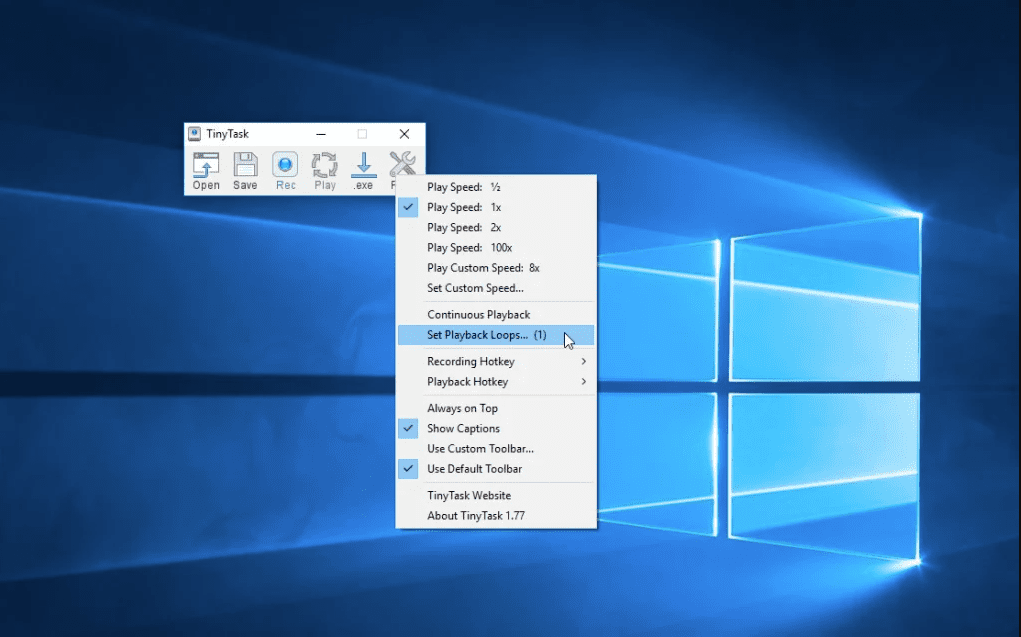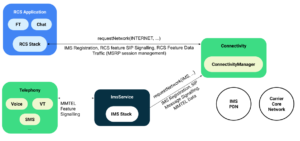We all know how it feels to get caught up in distractions while trying to focus on our tasks. One such distraction that many gamers and tech enthusiasts face is TinyTask. In simple terms, TinyTask is software that automates repetitive tasks on your computer. Still, it can quickly become a hindrance to productivity.
This section’ll explore what TinyTask is and why it can harm productivity. We’ll also provide a brief overview of the 10 effective techniques that we’ll cover in the upcoming sections. These techniques have been specifically curated to help gamers and tech enthusiasts stop TinyTask, allowing them to reclaim their focus and boost their productivity.
By implementing these techniques, you’ll be able to break free from the constant interruptions caused by TinyTask and regain control of your time. Whether you’re a hardcore gamer or a tech enthusiast striving for optimal performance, these techniques will empower you to enjoy seamless productivity without the disruptions of TinyTask.
We’ll dive deeper into each technique in the following sections and provide step-by-step guidance. So, let’s get started and equip ourselves with the tools and knowledge needed to combat TinyTask and unlock our full potential.
Manage Your Environment
In this section, we’ll explore the impact of your environment on your productivity, specifically when it comes to dealing with TinyTask. We’ll also provide specific techniques to help you manage your environment effectively, ensuring that it supports your productivity goals. Let’s get started!
How Environment Affects Productivity, Particularly with TinyTask
The environment in which you work or play can significantly influence your ability to focus and stay productive. When dealing with TinyTask, a distracting environment can make it even more challenging to stay on track. Here are some ways your surroundings can affect your productivity:
- Distractions: A cluttered workspace, noisy background, or constant interruptions can divert your attention away from important tasks and make it easier to get lured into TinyTask.
- Lighting: Poor lighting can strain your eyes and make it difficult to concentrate on tasks for extended periods. On the other hand, well-lit spaces can enhance alertness and productivity.
- Temperature: Uncomfortable extremes, either too hot or too cold, can become distractions and affect your ability to focus.
Techniques for Managing Your Environment
To create an environment that supports your productivity and helps you resist the temptation of TinyTask, consider following these techniques:
- Minimize Distractions:
- Remove unnecessary items from your workspace.
- Silence or put away your phone to reduce interruptions.
- Opt for a quiet location or use noise-cancelling headphones to block distractions.
- Optimize lighting:
- Position your workspace near natural light sources, such as windows, to benefit from natural daylight.
- Install adjustable lighting options to control the brightness according to your preference and task requirements.
- Maintain a Comfortable Temperature:
- Adjust the temperature in your workspace to a comfortable level that promotes productivity.
- Use a fan or heater to regulate the temperature if necessary.
Remember, creating an environment conducive to productivity is a personal preference, and what works best for you may vary. Experiment with different techniques and make adjustments based on your needs and preferences.
By managing your environment effectively, you’ll create a supportive space that minimizes distractions and maximizes your ability to focus on tasks, ultimately helping you stay on track and overcome TinyTask.
The following section delves into establishing productive habits, another crucial aspect of combating TinyTask. Stay tuned!
Establish Productive Habits
This section explores the crucial role of establishing productive habits in overcoming TinyTask. We’ll provide specific techniques to help you develop a routine that supports productivity and keeps you productive over time. Let’s get started!
The Importance of Establishing Productive Habits
Establishing productive habits is vital in overcoming TinyTask. Habits are powerful; they shape our lives and determine our success in achieving our goals. For gamers and tech enthusiasts, it’s essential to adopt habits that support productivity, helping to ensure they stay on task and avoid getting sucked into TinyTask.
By building good habits, you’ll develop routines that enable you to work more efficiently, helping you to complete tasks more effectively and avoid distractions. A well-designed routine supporting productivity will help you remain focused, motivated and achieve your goals.
Techniques for Establishing Productive Habits
To establish productive habits, consider following these techniques:
- Time Management:
- Set priorities and allocate time for high-priority tasks
- Use a calendar, task manager, or productivity apps to stay organized
- Break your work into manageable chunks and take breaks regularly
- Optimize Workspace Setup:
- Set up your workspace to promote productivity and minimize distractions.
- Keep everything you need for the task at hand within easy reach.
- Ensure your workspace is comfortable and supports good posture.
Remember, adjusting your habits and routines takes time and effort. Incorporate these techniques gradually and adjust them based on your needs and preferences.
Establishing productive habits empower you to stay on task and avoid TinyTask distractions. With time, a well-designed productivity routine will become second nature, significantly enhancing your efficiency and ensuring you reach your goals.
In the next section, we’ll cover additional techniques to help you combat TinyTask and unlock your full potential. Stay tuned!
Create a Task Prioritization System
To effectively combat TinyTask, it is crucial to establish a task prioritization system. This section will explain the importance of such a system and provide specific techniques to help you prioritize your tasks effectively. By using techniques like the Eisenhower Method and the Pomodoro Technique, you can regain control over your tasks and minimize the temptation of TinyTask.
Why Task Prioritization is Crucial
A task prioritization system is essential to manage your workload efficiently and stay on track. Without a clear sense of priorities, it’s easy to become overwhelmed and sidetracked by less important tasks or distractions like TinyTask. Prioritizing tasks allows you to focus on what truly matters, accomplish more, and reduce stress.
Techniques for Effective Task Prioritization
Here are two specific techniques you can use to prioritize your tasks effectively:
- Eisenhower Method:
- This method helps you categorize tasks based on urgency and importance.
- Divide your tasks into four categories: Urgent and Important, Important but Not Urgent, Urgent but Not Important, and Not Urgent or Important.
- Prioritize tasks in the “Urgent and Important” category first, then move on to the other categories.
- Pomodoro Technique:
- The Pomodoro Technique is a time-management method that helps you break down tasks into focused work intervals.
- Set a timer for a specific period, such as 25 minutes (known as a Pomodoro).
- Work on a task without any distractions until the timer goes off.
- Take a short break, around 5 minutes, and then repeat the process.
- After completing a set number of Pomodoros, take a longer break.
Using these techniques, you can prioritize your tasks effectively, allocate your time wisely, and avoid the allure of TinyTask. Remember, these techniques are flexible, and you can adapt them to fit your needs and preferences.
Minimize Multitasking
Multitasking is a productive approach, but when it comes to dealing with TinyTask, it can hinder your productivity. In this section, we’ll explore why multitasking can be detrimental and provide specific techniques to help you avoid multitasking and stay focused. Let’s dive in!
Why Multitasking can be Detrimental for Productivity
Multitasking, juggling multiple tasks simultaneously, can create a false sense of productivity. However, research has shown that our brains are not designed to handle multiple tasks at once effectively. When we switch between tasks, our attention becomes divided, leading to decreased focus, increased errors, and reduced efficiency.
When dealing with TinyTask, multitasking can be particularly detrimental. It can make you more susceptible to distractions and decrease your ability to stay on track with important tasks. By attempting to multitask, you risk further diverting your attention towards TinyTask and losing valuable time and productivity.
Techniques for Avoiding Multitasking
Here are two specific techniques you can use to minimize multitasking and increase your focus:
- Focus Blocks:
- Set aside dedicated time blocks for specific tasks or projects.
- During these blocks, eliminate distractions like social media notifications or email alerts.
- Focus solely on the task and commit to completing it before moving on to the next one.
- Batch Tasking:
- Group similar tasks together and complete them in batches.
- For example, instead of answering emails intermittently throughout the day, set specific times to dedicate to email correspondence. This way, you can efficiently tackle all your emails simultaneously rather than repeatedly switching between tasks.
By implementing these techniques, you’ll avoid the pitfalls of multitasking and regain control over your focus. Remember, it may take some time and practice to develop the habit of avoiding multitasking. Be patient with yourself and gradually integrate these techniques into your workflow.
Use Productivity Tools
When dealing with TinyTask, distractions can come at you fast and seemingly from every direction. To maintain productivity, it’s important to develop strategies to combat them – and one such strategy is to use productivity tools. This section’ll discuss the importance of productivity tools and recommend some excellent options to help you stay focused and get things done.
Why Use Productivity Tools?
Productivity tools can help you stay organized and focused while combating TinyTask. They can help you identify which apps or websites are the biggest productivity killers and provide valuable insights to help you adjust your habits and get more done. By creating a system incorporating productivity tools, you’ll find that you can work more efficiently and use your time more effectively.
Examples of Effective Productivity Tools
Here are two productivity tools that can help you combat TinyTask and improve your focus:
- RescueTime:
- RescueTime is an app that runs in the background on your computer or mobile device.
- It tracks your time on various apps and websites, categorizing them into productive and unproductive activities.
- You can set goals to balance your time more effectively and receive weekly reports to monitor your progress.
- Forest:
- Forest is a mobile app specifically designed to help you avoid distractions.
- When you start a task, you plant a virtual tree in the app.
- The tree grows while you work on the task, but if you navigate away from the app, the tree dies.
- Over time, the app will track how many trees you’ve grown and reward you for your progress.
Using these productivity tools allows you to stay focused and motivated even when it feels like TinyTask is pulling you away from important work. Although there are many productivity tools on the market, choosing the right ones is important. Research various options and try them to find the best combination that works for you.
Take Frequent Breaks
When you’re caught up in TinyTask, getting lost in a cycle of non-stop work is easy. However, taking breaks is crucial for maintaining productivity, especially when dealing with the demands of TinyTask. In this section, we’ll explore why taking breaks is essential and provide you with specific techniques to optimize your breaks and boost productivity.
Why Take Breaks?
Taking regular breaks throughout your workday is important for multiple reasons:
- Rest and Recovery: Our brains and bodies need time to rest and recover. Continuous work can lead to fatigue, decreased focus, and diminishing efficiency. Taking breaks allows you to rejuvenate and replenish your energy levels.
- Improved Focus and Creativity: Stepping away from a task for a short period can positively impact your ability to concentrate and come up with new ideas. Breaks allow your brain to process information and make connections, improving focus and creativity when you return to work.
- Eye Health: Taking breaks is crucial for your eye health when dealing with tasks involving screens, such as TinyTask. Extended periods of screen time can lead to digital eye strain and fatigue. Taking breaks gives your eyes a chance to rest and reduce the risk of long-term eye issues.
Specific Techniques for Effective Breaks
Here are two specific techniques you can use to optimize your breaks and enhance your productivity:
- The 20-20-20 Rule:
- Every 20 minutes, take a break and focus your eyes on something at least 20 feet away for 20 seconds.
- This technique helps reduce eye strain and prevents eye fatigue caused by continuous screen use.
- Mental Breaks:
- Instead of working through lunch or pushing yourself to the limit, schedule short mental breaks throughout your day.
- During these breaks, step away from your workstation and engage in activities that relax and recharge you, such as stretching, walking, or practicing deep breathing exercises.
By incorporating these techniques into your work routine, you’ll experience the benefits of taking frequent breaks. Remember, the key is consistently giving yourself small pockets of time to rest and reset. During these breaks, you’ll find yourself re-energized and ready to tackle TinyTask with renewed focus.
Optimize Your Mindset
Having the right mindset is essential to stop TinyTask and maintain productivity. Your mindset plays a crucial role in approaching tasks and overcoming challenges. In this section, we’ll explore why mindset is vital when tackling TinyTask and provide you with specific techniques to optimize your mindset for success.
Why is Mindset Important?
Having the right mindset is key when dealing with TinyTask because it can significantly impact your motivation, focus, and ability to overcome distractions. Here’s why mindset matters:
- Motivation: A positive mindset keeps you motivated, even when faced with challenging tasks. It helps you maintain a can-do attitude, stay determined, and push through difficult moments.
- Focus: With the right mindset, you can better manage distractions and maintain focus on the task at hand. It allows you to channel your energy towards completing tasks without getting sidetracked by TinyTask.
- Resilience: Developing a resilient mindset enables you to bounce back from setbacks caused by TinyTask. It helps you stay persistent, learn from failures, and keep moving forward.
Techniques to Optimize Your Mindset
Here are two specific techniques you can use to optimize your mindset when dealing with TinyTask:
- Mindfulness:
- Practice mindfulness to cultivate a focused and present mindset.
- Set aside specific moments during your day to check in with yourself and ground your thoughts.
- Engage in activities like deep breathing exercises, meditation, or mindful walks to calm your mind and increase your ability to concentrate.
- Positive Self-Talk:
- Use positive self-talk as a powerful tool to combat negative thoughts and stay motivated.
- When facing challenges or distractions caused by TinyTask, consciously replace negative self-talk with positive affirmations.
- Remind yourself of your abilities, past successes, and how you’ve overcome similar obstacles in the past.
By incorporating these techniques into your daily routine, you can optimize your mindset to effectively stop TinyTask and maintain focus on your goals. Remember, developing a positive and resilient mindset takes time and practice. Be patient with yourself and celebrate small victories along the way.
Practice Self-Care
Taking care of yourself is crucial when dealing with TinyTask and maintaining productivity. Our bodies and minds require proper care and attention to function at their best. In this section, we’ll explore why self-care is important and provide you with specific techniques to implement into your routine.
Why is Self-Care Important?
Self-care is critical when working on TinyTask because it helps increase productivity and combat burnout. Here’s why self-care matters:
- Improved Focus: Engaging in self-care activities, such as exercise or meditation, can help improve your ability to focus and concentrate on tasks, making it easier to stop TinyTask and complete your work.
- Increased Energy: Taking care of your physical and mental health can increase your energy levels and help you stay motivated to work, even on difficult tasks.
- Lowered Stress: When dealing with TinyTask and other work-related pressures, self-care can help lower your stress levels and prevent burnout.
Techniques for Self-Care
Here are two specific techniques you can use to practice self-care and boost your productivity when working on TinyTask:
- Exercise:
- Regular exercise, such as jogging or practicing yoga, can benefit your physical and mental well-being.
- Exercise increases endorphins, improving mood and reducing stress.
- Aim for at least 30 minutes of exercise most days.
- Sleep:
- Getting enough sleep is essential for productivity and well-being.
- Aim for 7-9 hours of sleep each night to help you stay focused and refreshed throughout the day.
- Practice good sleep hygiene, such as turning off electronics before bed and creating a relaxing nighttime routine.
By prioritizing self-care, you’ll be better equipped to tackle TinyTask and other work-related challenges. Incorporating techniques like exercise and sleep can help increase focus and motivation while reducing stress and burnout.
Conclusion
Congratulations! You now have a comprehensive list of 10 effective techniques to stop TinyTask and boost productivity. To recap, we covered the following:
- Creating a distraction-free environment
- Breaking down tasks into manageable chunks
- Prioritizing tasks using the Eisenhower Matrix
- Using the Pomodoro Technique
- Eliminating unnecessary meetings
- Streamlining communication
- Setting boundaries and saying no
- Practicing mindfulness
- Taking breaks and vacations
- Practicing self-care
By implementing these techniques, you can stop TinyTask in its tracks and increase your productivity levels. We encourage you to try these techniques and see which ones work best.
In summary, managing TinyTask can be challenging, but it’s not impossible. Using these 10 techniques lets you stay focused and achieve your goals. Remember to take things one step at a time, go easy on yourself, and celebrate small victories.
Thank you for reading this document and taking the time to improve your productivity. These strategies will help you overcome TinyTask and achieve your goals. If you have any questions or concerns, please consult our FAQ section or contact our customer support team.
Happy productivity!






More Stories
How to Effectively Remove ChocoEukor from Your Android Device
From Pixels to Perfection: Mastering the Art of Web Design
dji pocket 3 vs. Competitors: Which Gaming Console Reigns Supreme.